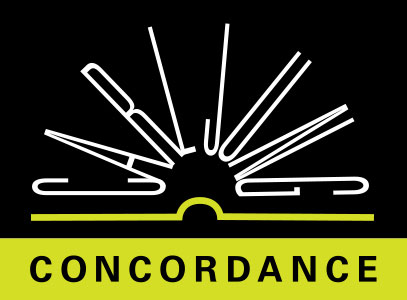A popular and ubiquitous goddess from the time of Hesiod until late antiquity. Unknown in Homer and harmless in Hesiod, she emerges by the 5th cent. as a more sinister divine figure associated with magic and witchcraft, lunar lore and creatures of the night, dog sacrifices and illuminated cakes, as well as doorways and crossroads:
A goddess known as the `mother of death'
CW5 ¶ 577Diocletian dedicated a crypt to Hecate, with 365 steps leading down to it. Cave mysteries in her honor seem also to have been celebrated in Samothrace (fig. 034) . The Hecate mysteries flourished in Rome towards the end of the fourth century
CW5 ¶ 57775 CW5 Ser: 3 Par 577 (b) FigNo 034
Hecate plays an important part in Greek syncretism, being confused with Artemis, who was also called the,`far-hitting,' or `she who hits at will,' a name that once more reveals her superordinate power. Artemis is the huntress with hounds, and Hecate too is the wild huntress prowling at night
CW5 ¶ 577Her symbols are the key, the whip, the dagger, and the torch (fig. 258.58). As the deadly mother, her attributes are dogs
CW5 ¶ 57776 CW5 Ser: 5 Par 577 (d) FigNo 258.58
GODDESS OF THE
UNDERWORLD
The goddess of the underworld, Hecate, is sometimes represented with a horse's head
CW5 ¶ 421As goddess of the underworld, Hecate, is dog-headed, like Anubis. As Canicula, she received dog sacrifices to keep away the pest
CW5 ¶ 355As guardian of the gate of Hades and as the triple-bodied goddess of dogs, she is more or less identical with Cerberus. Thus, in bringing up Cerberus, Heracles was really bringing the vanquished mother of death to the upper world
CW5 ¶ 577It is she who sends that horrible and fearful night-time apparition, the Empusa, which Aristophanes says comes wrapped in a bladder swollen with blood. According to Libanius, the mother of Aischines was also called Empusa, because she“rushed out upon women and children from dark places”
CW5 ¶ 577As an incubus or vampire she appears in the form of Empusa, or as a man-eating lamia (fig. 258.38a) or again in that more beautiful guise, the “Bride of Corinth”.The Empusa had peculiar feet: one foot was of brass, the other of ass's dung
CW5 ¶ 57777 CW5 Ser: 12 Par 577 (i) FigNo 258.38a
Hecate is a real spook-goddess of the night and phantoms, a nightmare; she is sometimes shown riding a horse, and in Hesiod she is counted the patron goddess of riders
CW5 ¶ 577She is the mother of all witchcraft and witches, the patron goddess of Medea, because the power of the Terrible Mother is irresistible, coming as it does from the unconscious
CW5 ¶ 577The pillory where criminals were scourged was also known as theHekate; and to her, as to the Roman Trivia, were dedicated junctions of three roads, forked roads, and crossroads. Where the roads branch off or meet, dog-sacrifices were offered to her, and there too were thrown the bodies of the executed: the sacrifice occurs at the point of union
CW5 ¶ 577Where the roads cross and enter into one another, thereby symbolizing the union of opposites, there is the “mother,” the object and epitome of all union
CW5 ¶ 577Where the roads divide, where there is parting, separation, splitting, there we find the “division,” the cleftthe symbol of the mother and at the same time the essence of what the mother means for us, namely cleavage and farewell. Accordingly, the meaning of a sacrifice on this spot would be: propitiation of the mother in both senses
CW5 ¶ 577MATERNAL SIGNIFICANCE
OF THE GODDESS
Hecate is a birth-goddess(),the `multiplier of cattle,' and goddess of marriage. In Orphic cosmogony, she occupies the centre of the world as Aphrodite and Gaia, if not as the world-soul itself
CW5 ¶ 577In Tralles, Hecate appears side by side with Priapus; there is also a Hecate Aphrodisias
CW5 ¶ 577The identification of Hecate with Brimo as the underworldly mother is understandable, also her identification with Persephone and Rhea, the primitive All-Mother. Her maternal significance also explains her confusion with Eileithyia, the goddess of childbirth
CW5 ¶ 577In the Hecate mysteries a wand, named the(`white leaved') was broken. This wand protected the purity of virgins and caused madness in anyone who touched it. We recognize here the motif of the sacred tree, the mother who might not be touched. Only a madman would attempt to do so
CW5 ¶ 577Her close relation to the moon-goddess suggests that she was a promoter of growth. Hecate was the first to bring Demeter news of her stolen daughter, another reminder of Anubis.Hecate herself is, on occasion, a goddess of marriage and birth
CW5 ¶ 355As the “spirit-mother” she sends madness, the moonsickness. This idea is perfectly sensible, because most forms of lunacy consist of affections which amount to an invasion by the unconscious and an inundation of the conscious mind
CW5 ¶ 577While the Trojan war can be seen as an outgoing, a leaving of one's house in the morning and going out into the arena and tumult of life, the journey narrated in The Odyssey represents a return, a coming back to where one started:
